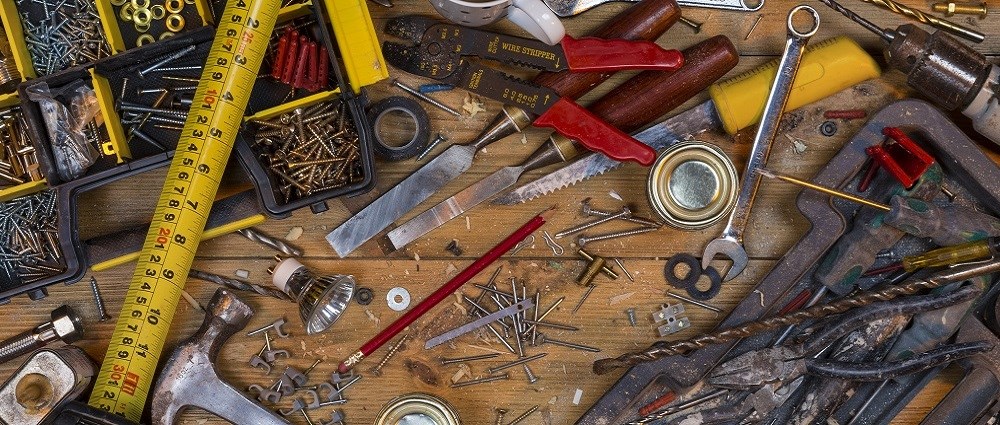Home maintenance – keeping your home insured
The most recent figures available from the Association of British Insurers (ABI) and the Office for National Statistics (ONS) show that of the 26.7 million households recorded in the UK in 2013, 17 million had buildings insurance cover in place, and insurers on average paid out £8.2m each day in domestic property claims1.
Only 79% of home insurance claims were successful during 2013-14, which was partly due to poor maintenance2. Taking steps to ensure that your home remains insurable may not be an appealing prospect but can save considerable expense and heartache so is well worth scheduling in, particularly in the spring and summer months with generally more favourable weather.
Exterior maintenance
Maintaining the outside of your property will not only keep it looking presentable for your own satisfaction, but it clearly shows you are someone who cares about your property.
- Walls – Deteriorated render, whether it is pebbledash, smooth or roughcast, can expose your home to the elements and especially damp issues. If you notice bulging, cracking, peeling or areas of render having disappeared, it’s a sign that TLC is needed to restore your home’s barrier3. Horizontal cracks appearing along exterior walls could indicate that one or more ties in the cavity are failing. To reduce the risk of the wall potentially crumbling and needing to be rebuilt, an expert can be consulted.
- Roofs – Displaced, damaged or entirely missing roof tiles including those along the ridge can quickly result in potentially disastrous leaks, particularly in areas prone to considerable rainfall. Tiles as well as the nails or other fixings holding them in place need periodic attention, which also applies to flat roofs where standing water can occur, leading to damp ceiling patches.
- Windows and doors – If any of the locking mechanisms become damaged, replace them as promptly as possible to maintain your home’s security. It’s also prudent to keep an eye on the physical condition of window and doorframes, as peeling paint or other age-related signs such as rot could lead to a claim being rejected.
- Drains and gutters – Homes with nearby trees are especially susceptible to leaves accumulating, which can cause water overflow, leaks, corrosion, blockages and physical damage in the case of guttering falling off, possibly taking any wooden fascia with it. Downpipes, brackets and flashings also need checking. If you don’t have a ladder that is long enough, many window cleaners offer gutter-clearing and checking as an additional service.
- Chimneys – If you notice damp on the ceiling of a room situated beneath the chimney, it’s likely that gaps exist in the mortar, which will require remedying. Deteriorating render, lead-work, pointing or mortar can result in a chimney becoming unstable, potentially causing harm to the roof, property, vehicles and even people below. Annual chimney sweeping will reduce the risk of a fire and of carbon monoxide and other poisonous gases entering the property.
- Japanese Knotweed – Capable of causing significant damage to pavements, paths, garden walls and even houses, any signs of this harmful weed growing should be reported to a professional as a matter of importance, as it can spread quickly.
Maintaining the inside of your home
Keeping on top of jobs inside your property also contributes to increasing your chances of a successful insurance claim.
- Floors and ceilings – creaks, unevenness and bounciness are signs that your home’s floorboards either need securing down again with new nails, screws, glue or other fixings, or perhaps even replacing if they are older and have succumbed to rot. Tiles, linoleum, laminate and other types of flooring also need maintaining. Not only will this keep your home looking more presentable; it will also serve as better protection for pipes and ceilings beneath, which should be checked for rot, damp, leaks and cracks from time to time.
- Interior walls – to prevent condensation leading to mould growing on the walls, regular ventilation is recommended. Also, to maintain the structure of your home, ensure that any damage sustained to a wall is addressed promptly.
- Boilers and plumbing – Check your existing policy or a potential new one to see if the boiler is covered. If not, various utilities companies offer annual servicing plans, which also typically cover the cost of any breakdowns and replacement parts. To minimise the chance of a pipe freezing, bursting and causing considerable consequential damage, don’t leave your central heating system off in the winter months while you’re on holiday and certainly don’t attempt to thaw any frozen pipes in a hurry, doing so gently instead. Dripping taps and toilet cisterns should also be included in basic home plumbing maintenance.
- Bathrooms – not only does mouldy sealant look unattractive but it can lead to water damage in both the bathroom and the room beneath. Crumbling tile grout also has unwanted consequences in the form of loose tiles, which can fall and damage the bathtub or flooring below.
- Spare keys – to reduce the chance of a home insurance claim being refused, it’s sensible to avoid storing spare keys in an obvious place that can be easily identified by burglars.
- Smoke detectors – having smoke detectors installed will better safeguard your home and its contents against damage from fire and smoke, as they will make you more aware. ED detectors are ideal compared to having to periodically replace batteries.
Check your home insurance policy booklet’s wording, as it may well stipulate that maintenance is required in order to maintain your cover. Homeowners of all ages but particularly those of mature years may not be able to actually undertake the bulk of any maintenance work required, but it’s usually possible to at least keep an eye on the areas highlighted above, so that a professional tradesperson can then provide a more accurate assessment.
1ABI
2 ABI

